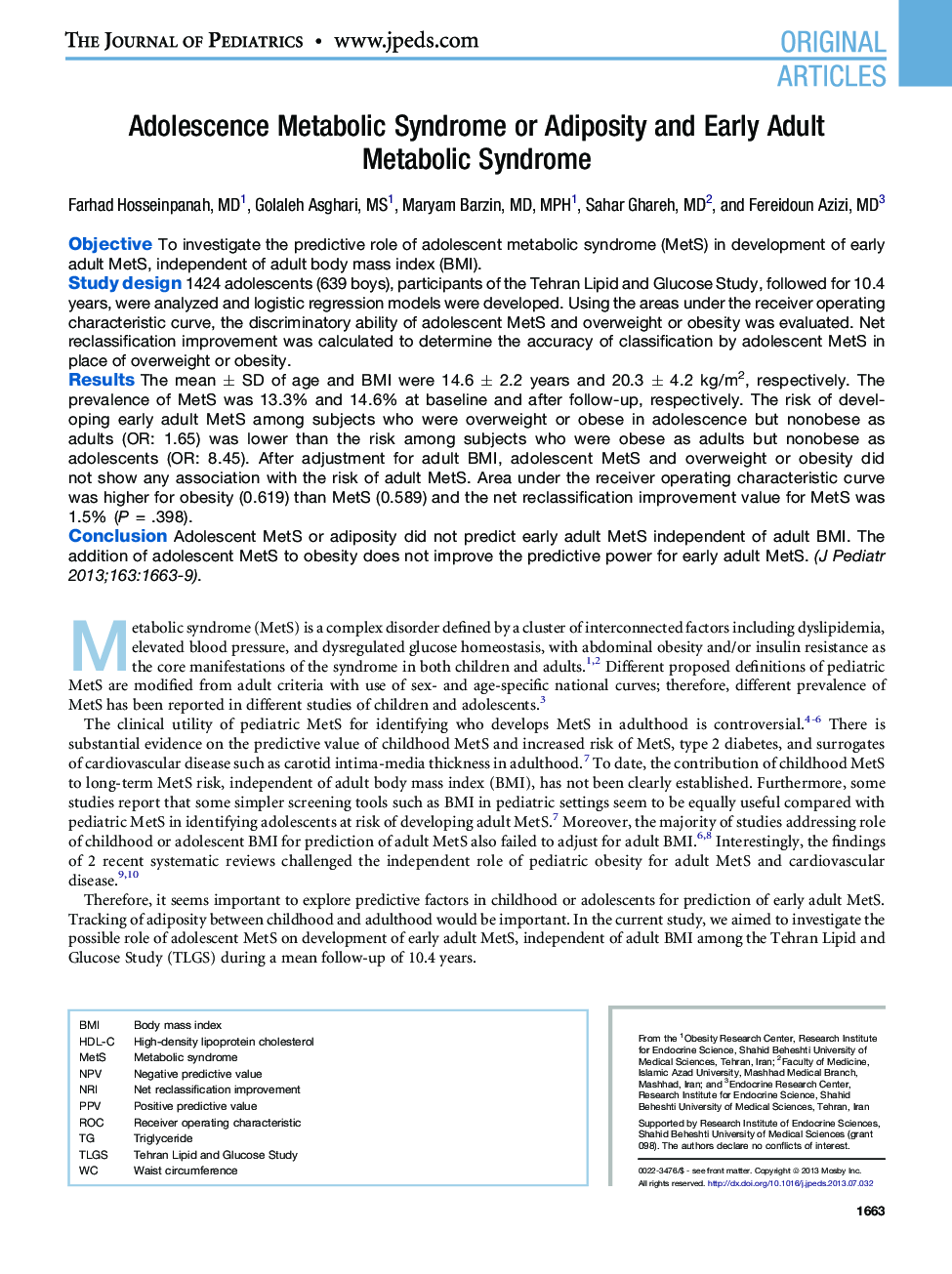| Article ID | Journal | Published Year | Pages | File Type |
|---|---|---|---|---|
| 6222920 | The Journal of Pediatrics | 2013 | 8 Pages |
ObjectiveTo investigate the predictive role of adolescent metabolic syndrome (MetS) in development of early adult MetS, independent of adult body mass index (BMI).Study design1424 adolescents (639 boys), participants of the Tehran Lipid and Glucose Study, followed for 10.4 years, were analyzed and logistic regression models were developed. Using the areas under the receiver operating characteristic curve, the discriminatory ability of adolescent MetS and overweight or obesity was evaluated. Net reclassification improvement was calculated to determine the accuracy of classification by adolescent MetS in place of overweight or obesity.ResultsThe mean ± SD of age and BMI were 14.6 ± 2.2 years and 20.3 ± 4.2 kg/m2, respectively. The prevalence of MetS was 13.3% and 14.6% at baseline and after follow-up, respectively. The risk of developing early adult MetS among subjects who were overweight or obese in adolescence but nonobese as adults (OR: 1.65) was lower than the risk among subjects who were obese as adults but nonobese as adolescents (OR: 8.45). After adjustment for adult BMI, adolescent MetS and overweight or obesity did not show any association with the risk of adult MetS. Area under the receiver operating characteristic curve was higher for obesity (0.619) than MetS (0.589) and the net reclassification improvement value for MetS was 1.5% (P = .398).ConclusionAdolescent MetS or adiposity did not predict early adult MetS independent of adult BMI. The addition of adolescent MetS to obesity does not improve the predictive power for early adult MetS.
